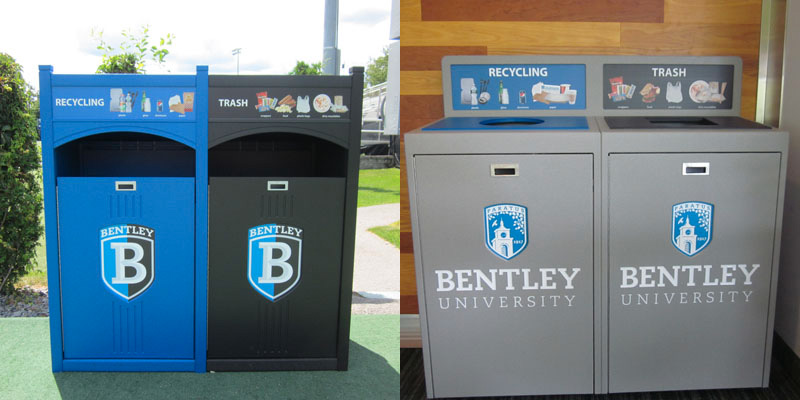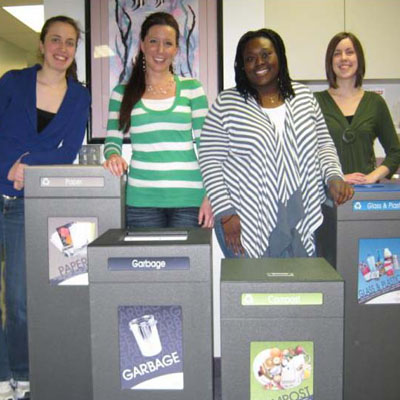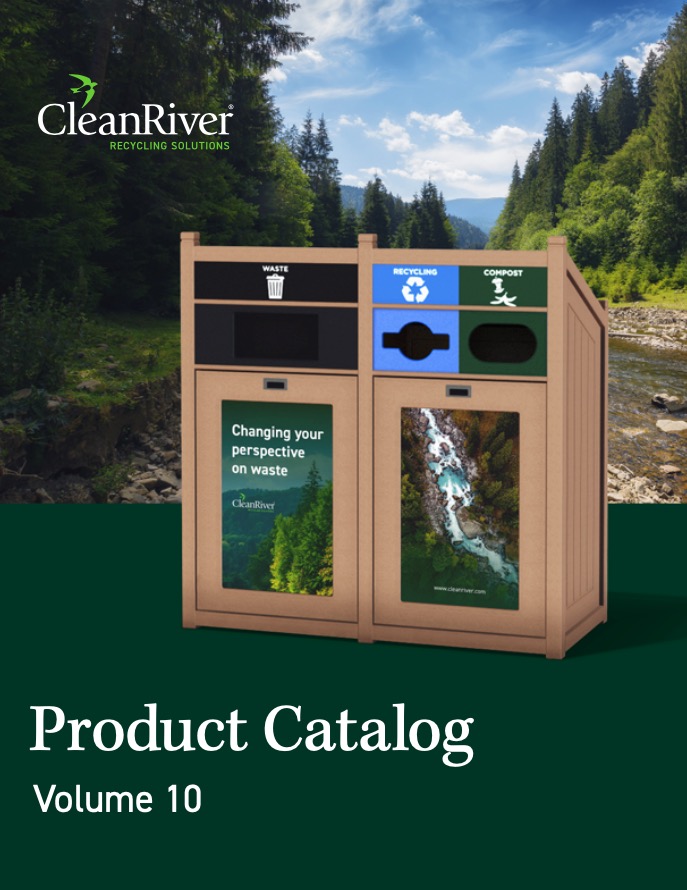Share
If you’re the person in charge of implementing an effective recycling program for your college or university, you would love to meet our CleanRiver Regional Sales Manager, Tom Lembo. We recently sat down with Tom to better understand what bins make for a more effective program in this market. However, according to Tom, it’s not really about just the bins at all! Below is our interview with Tom, where he shares his insights as to what makes the most effective college or university recycling program.

Question 1: What are the first steps for implementing an effective recycling program for your university or college campus?
Tom Lembo (TL): “The first step to any recycling program is to consult with your waste hauler to make sure you have a full understanding of what waste is recyclable, what the allowable contamination rate is, and what options you have to either save you money or make you money. You need to find out the following:
- How often is your waste is collected?
- Are you separating or comingling recycling (if recycling at all)?
- Are you getting weight tickets?
- Will your waste hauler collect compost?
Once you have this information you can then delve a little deeper into your current situation and identify areas of potential cost reduction.
Another important step is to work with your custodial team. You’ll be surprised at the invaluable insight they can offer in terms of any current waste collection issues that you may be unaware of. They also can provide a unique perspective of what design of bins would work best in certain areas and the ideal number of bins and collection streams for your campus. ”

TL: “Be sure to conduct a waste audit so you can determine what kind and how much waste your entire campus produces. ” Check out our waste audit tool kit to help you plan and execute your next waste audit. This is the one of key tools we offer and is a great check list to help you started.
Question 2: If someone asks you the number, and type, of bins that are needed for their college/university recycling program, how would you answer this?
TL: “This is a tough question to answer. It’s similar to the question, “How long is a string?” Each campus is unique and has numerous different factors to consider when coming up with a number. The first thing to consider is location; where would the bins be most utilized?” Some examples being:
- Cafeterias
- Hallways
- Classrooms
- Office Areas
- Entrance ways/Lobbies
- Athletic Facilities
- Outdoor/Public Spaces
- Dorm Rooms/Living Facilities

TL: “Make sure to look at your overall floor plan and the traffic flow for every space of your campus. The info you get from conducting your initial waste audit will help identify the key areas where the most waste is usually generated. This will help you identify the types of bins, the size and the number of stream collections needed for every space. Some of the other ‘risks’ to understand are the scope and complexity of a college or university waste and recycling program such as cleanout days at the end of the year, new construction projects, and renovations, to name a few.” This is because each of these factors will alter the number and types of bins necessary for an effective campus recycling program.
Question 3: How do you get students and faculty to actually use the bins around campus?
TL: “Getting people to ‘buy in’ to the program and effectively use the recycling containers is one of the key components to our success in the industry and is one of our passions. As I mentioned before, including your custodial team and getting their ‘buy in’ is a major peice of the puzzle. We encourage our clients to get their custodial team involved in the design stage and this helps them engage in the recycling program because they feel a sense of ownership due to their valuable input. We partner with our clients to implement our CleanRiver 3C Process which stands for Culture, Communication and Collection.”
To learn more about the 3Cs Process watch this quick video here.

Tom Lembo has been a Recycling Program Expert at CleanRiver for over 8 years, if you would like to reach out to him directly, please contact tom.lembo@cleanriver.com or by phone at 905-717-4987
CleanRiver Recycling provides a variety of innovative, flexible and customizable recycling solutions. To determine the right solution to meet your needs, use the CleanRiver product selector.
If you’d like more information on how to implement a revenue-generating recycling program for your office, please call us at 1-888-646-4246 or email solutions@cleanriver.com.
[big_cta image=”https://cleanriver.com/content/uploads/2015/04/widget-icons_06-e1458156032932.png” href=”https://go.cleanriver.com/l/584393/2018-11-08/3w51n” multiline=”true”]How-To Guide for Waste Audit Success[/big_cta]

